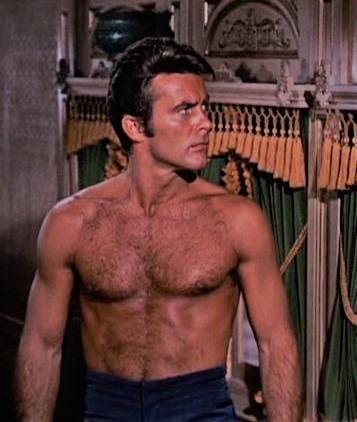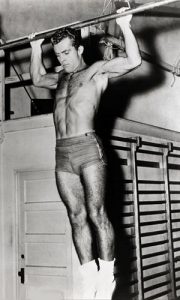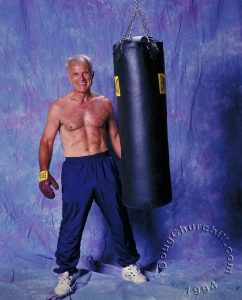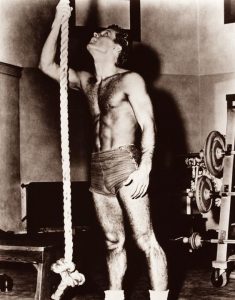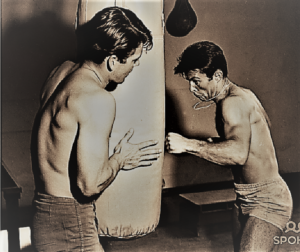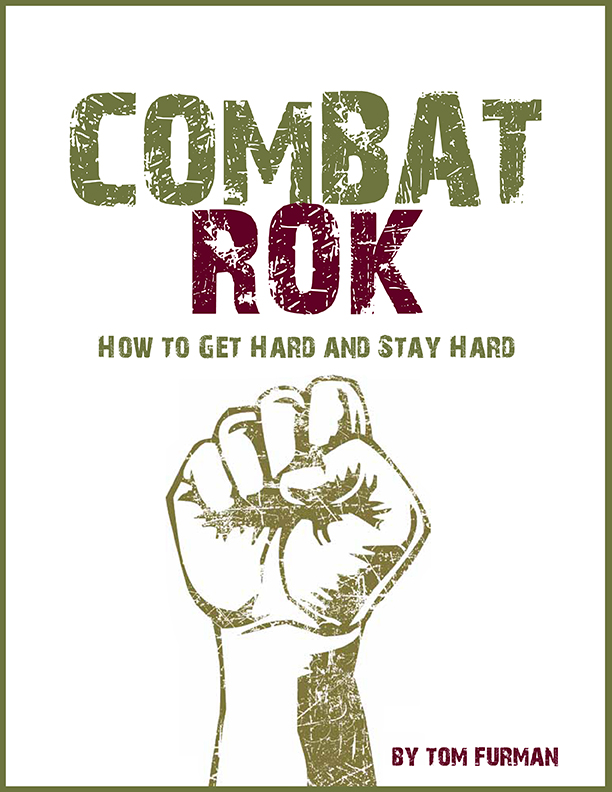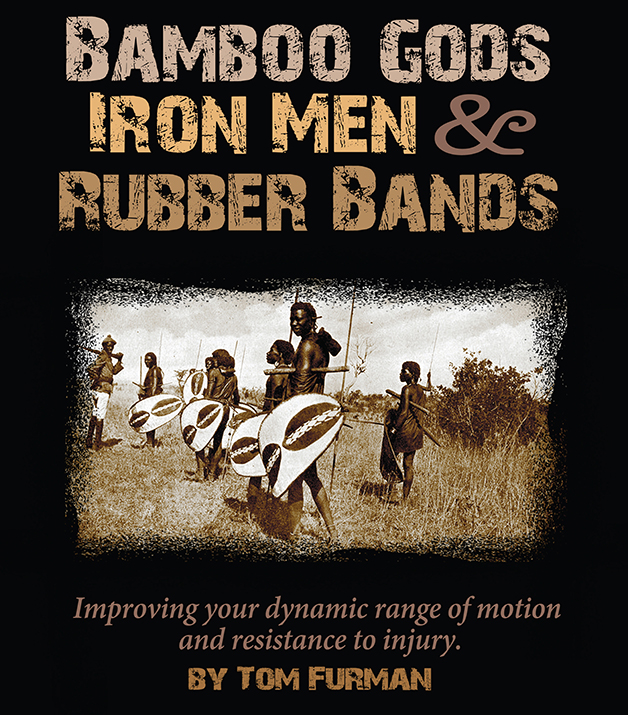Robert Conrad represents one of the apex action star icons in entertainment.
Part of the genesis of the Wild, Wild, West, star was being raised by a single mother. She wanted him to identify with men more and his Chicago upbringing, along with boxing helped forge the personality of this high school dropout.
Conrad had legitimate boxing skills. His amateur record was, 29-2-1. His pro record was, 4-0-1. He had an exhibition bout with Tony Danza at age 55 in 1989 as well, which many thought he won.
As well, Bob Conrad is a veteran martial artist. He started training with Bob Heron in 1960. Later he got to know Ed Parker. He ultimately studied with John Leone of Kajukenpo. These arts no doubt fused with his considerable ring and street experience and translated into the fight scenes in Wild, Wild, West.
When people ask how Robert Conrad trained, it’s pretty simple. Old School. Not better, not worse, but it was the standard training at the time. The gym was a boxing gym with some gymnastics gear like climbing ropes, dip bars, stall bars, chinning bars and a rack of dumbbells. The cornerstone of Conrad’s workouts was roadwork,…nearly daily. Then ropework, bagwork, sparring and bodywork. Notice in the highlighted photos above that both pull ups and rope climbing were emphasized. The pulling muscles of the upperbody were developed to offset the thousands of reps of punching.
Here in his own words is how he trained –
I trained my body. I did a series of 22 kata (forms) taught to me by John Leone,
different moves: upward, outward, two-knuckle punch, and the kicks. In each kata
(form) there is a different ending. What I would primarily do was train my body. I did
road work. I did a lot of situps and pushups. Now at my age I have an abdominal
wall that’s…well, it’s there. I also did isometric exercises. There was no pumping iron.
I’m not saying you should or shouldn’t, I just didn’t do that. Then I would do the 22
kata (forms).
While their exists images of Conrad lifting weights, he gave an interview on his radio show speaking basically how his training was very boxing and roadwork oriented. Something he could do almost anywhere. Realize the convenience of weight training facilities decades ago was nowhere near what it is now.
Finally, the question is often asked how Robert Conrad got that six pack that seemed to last and last. He mentioned bluntly on his radio show that is was, “200 situps a day”. Old school, feet under a leather strap on a slant board. He also mentions on a challenge that he once did, “1000 straight,.. an attitude thing,..”.
To summarize, during Wild, Wild, West, he’d wake up at 6am, run 3-5 miles beside his manager driving a golf cart. Then at lunch head go to the CBS Studio Gym. He’d have a sparring partner and do his ropework, bagwork, sparring and bodywork. Then return to shooting, have a light dinner and go to bed. On Saturdays he’d play touch football and his team was undefeated. On Sundays he’d spend it with family. He actually lived at the studio during the week. This type of training was common back in the day. As simple as it was, it forged some very, tough, guys.

